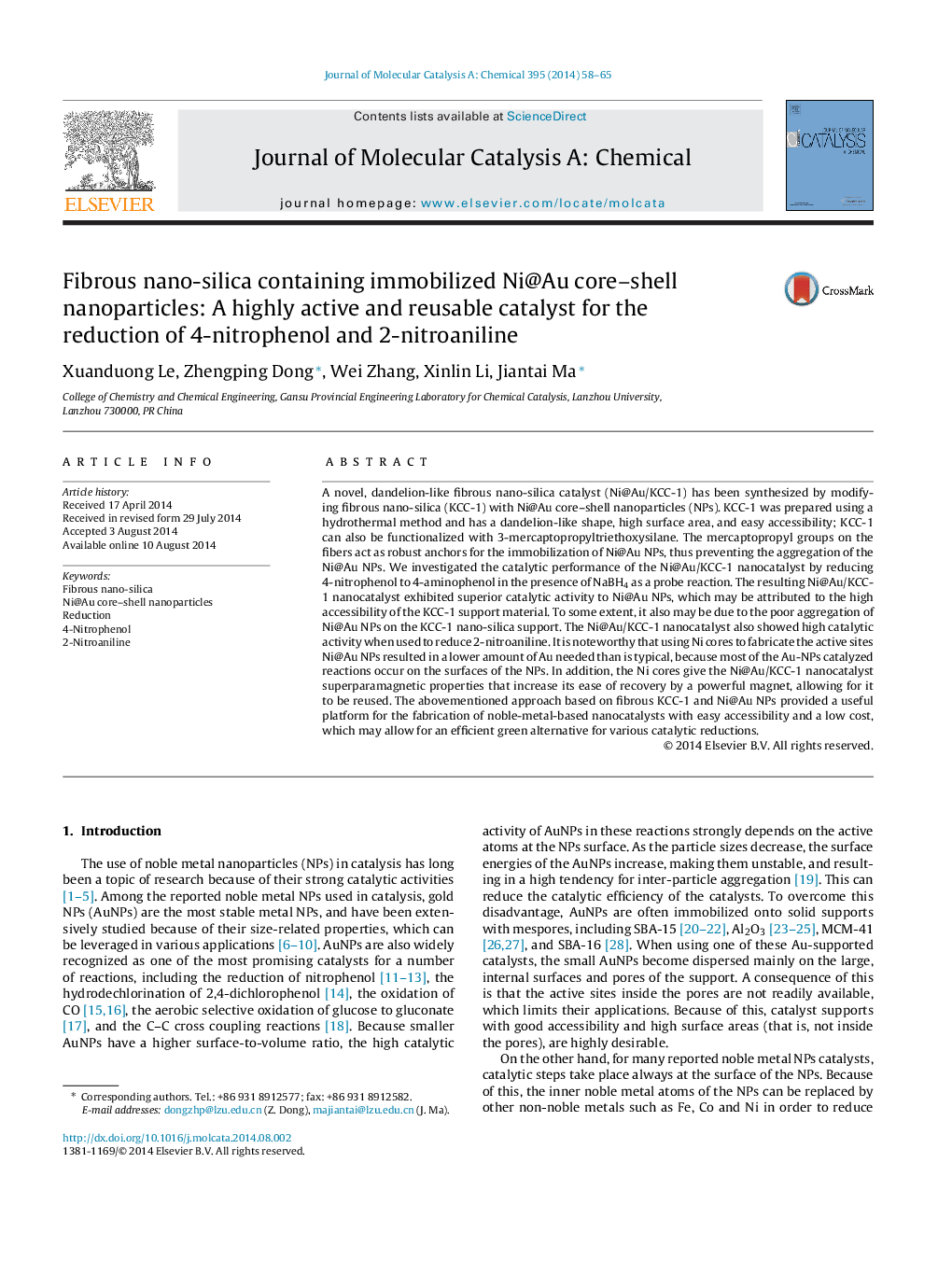| کد مقاله | کد نشریه | سال انتشار | مقاله انگلیسی | نسخه تمام متن |
|---|---|---|---|---|
| 65296 | 48388 | 2014 | 8 صفحه PDF | دانلود رایگان |

• Ni@Au NPs were well-dispersed on the fibers of the KCC-1 without aggregation.
• Ni@Au/KCC-1 nanocataly with easy accessibility owing to its fibers and not pores.
• Ni@Au/KCC-1 showed excellent catalytic activity in reduction of nitro-compounds.
• Ni@Au/KCC-1 could be easily reused for ten times without losing catalytic activity.
A novel, dandelion-like fibrous nano-silica catalyst (Ni@Au/KCC-1) has been synthesized by modifying fibrous nano-silica (KCC-1) with Ni@Au core–shell nanoparticles (NPs). KCC-1 was prepared using a hydrothermal method and has a dandelion-like shape, high surface area, and easy accessibility; KCC-1 can also be functionalized with 3-mercaptopropyltriethoxysilane. The mercaptopropyl groups on the fibers act as robust anchors for the immobilization of Ni@Au NPs, thus preventing the aggregation of the Ni@Au NPs. We investigated the catalytic performance of the Ni@Au/KCC-1 nanocatalyst by reducing 4-nitrophenol to 4-aminophenol in the presence of NaBH4 as a probe reaction. The resulting Ni@Au/KCC-1 nanocatalyst exhibited superior catalytic activity to Ni@Au NPs, which may be attributed to the high accessibility of the KCC-1 support material. To some extent, it also may be due to the poor aggregation of Ni@Au NPs on the KCC-1 nano-silica support. The Ni@Au/KCC-1 nanocatalyst also showed high catalytic activity when used to reduce 2-nitroaniline. It is noteworthy that using Ni cores to fabricate the active sites Ni@Au NPs resulted in a lower amount of Au needed than is typical, because most of the Au-NPs catalyzed reactions occur on the surfaces of the NPs. In addition, the Ni cores give the Ni@Au/KCC-1 nanocatalyst superparamagnetic properties that increase its ease of recovery by a powerful magnet, allowing for it to be reused. The abovementioned approach based on fibrous KCC-1 and Ni@Au NPs provided a useful platform for the fabrication of noble-metal-based nanocatalysts with easy accessibility and a low cost, which may allow for an efficient green alternative for various catalytic reductions.
Figure optionsDownload high-quality image (97 K)Download as PowerPoint slide
Journal: Journal of Molecular Catalysis A: Chemical - Volume 395, December 2014, Pages 58–65